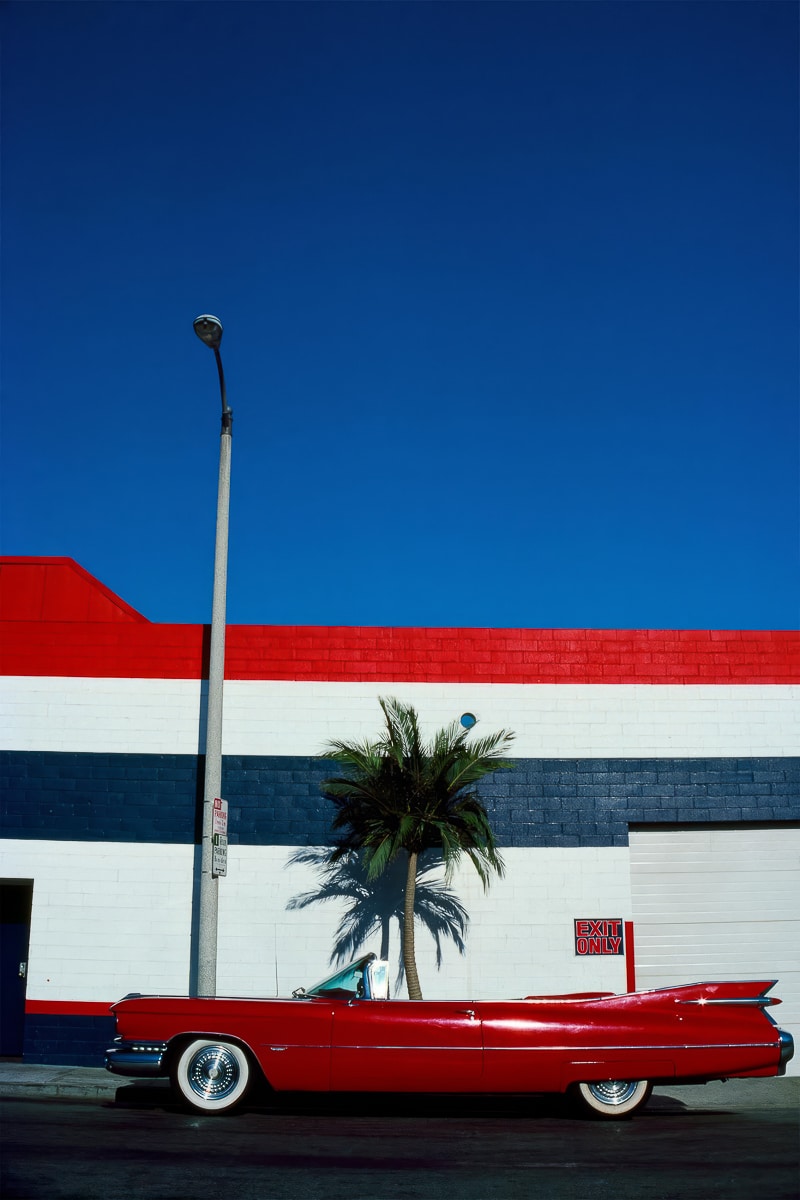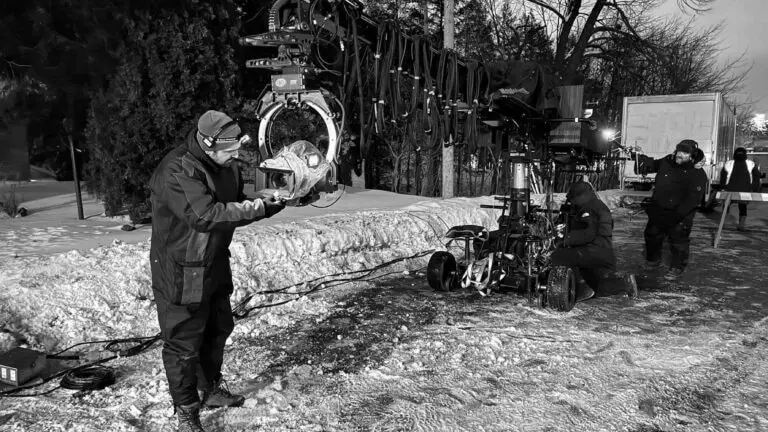Unlock the Artistic Potential of Polarizing Filters
Diving into the world of professional photography and cinematography requires a deep understanding of the tools and techniques that can elevate your work to the next level. Among these tools, polarizing filters stand out as an essential addition to any camera bag. These filters can increase color saturation, decrease reflections, and create unique visual effects that cannot be replicated using digital post-production techniques. In this comprehensive guide, we will explore the intricacies of polarizing filters, their optimal usage, and their role in enhancing your photography and cinematography skills. We will delve into the different types of polarizing filters, their impact on various aspects of your images, and some creative techniques, such as the day-for-night effect using a polarizing filter combined with a red or blue filter.
Overview of Polarizing Filters
Polarizing filters, whether linear or circular, work by selectively filtering out sunlight that has been directly reflected toward the camera at specific angles. This leaves behind more diffuse and colorful light, resulting in images with less glare, increased color saturation, and enhanced contrast. The angle that is filtered is controlled by rotating the polarizer itself, and the strength of the effect can be controlled by adjusting the camera’s line of sight relative to the sun.
Understanding Sun Angle and Filter Rotation
To maximize the impact of a polarizing filter, it is essential to understand the relationship between the sun’s position and the camera’s line of sight. A polarizing filter achieves its maximum effect when the camera’s line of sight is perpendicular to the direction of the sun. However, the polarizing effect varies depending on the angle between the sun and the camera’s line of sight. Rotating the polarizer changes the angle of maximum polarization, which can be visualized by rotating the hand while pointing the index finger at the sun.
As you become more familiar with polarizing filters, you will develop an intuition for how the filter’s rotation affects the image. Experimenting with different angles and rotations will help you discover the ideal settings for each shot. Remember that the best way to gauge the polarizing effect is to observe the changes through the camera’s viewfinder or rear LCD while rotating the filter.
Wide Angle Lenses and Polarizing Filters
When using wide-angle lenses, the polarizing effect can sometimes appear uneven across the frame due to differences in the angle between the sun and various parts of the scene. This can lead to undesirable results, such as an uneven sky or unnatural transitions between areas with different polarizing effects.
To mitigate these issues, carefully rotate the polarizing filter to ensure that the most pronounced polarization coincides with the image’s edge or corner. By doing so, the change in polarization will look more like a natural gradient across the sky, creating a more visually appealing image. It is also essential to consider the potential limitations of using polarizing filters with wide-angle lenses, such as vignetting or uneven polarization effects.
Polarizing filters have been used in various film techniques to enhance the visual aesthetics and control reflections in a scene. Here’s a list of some film techniques that utilize polarizing filters:
Reducing reflections and glare: Polarizing filters can eliminate or minimize reflections and glare from surfaces like water, glass, and other non-metallic surfaces, allowing you to capture clearer and more detailed shots.
Enhancing color saturation: By filtering out certain light waves, polarizing filters can improve color saturation in a scene, particularly for skies, foliage, and other vibrant elements.
Creating contrast in skies: Polarizing filters can darken blue skies and create more contrast between the sky and the clouds, resulting in a more dramatic and visually appealing scene.
Enhancing visibility through water: By minimizing surface reflections, polarizing filters can increase visibility below the water’s surface, allowing you to capture underwater elements more clearly.
Controlling haze: Polarizing filters can help reduce atmospheric haze, resulting in clearer and sharper images, particularly for distant landscapes and aerial shots.
Day-for-night technique: When combined with a red filter, a polarizing filter can help create the illusion of nighttime while shooting during the day, by darkening the sky and adding a warm tone to the scene.
Improving contrast in black and white films: Polarizing filters can be used to enhance contrast in black and white films, making the images appear more striking and dynamic.
Highlighting textures and details: By controlling reflections and glare, polarizing filters can bring out textures and details in various surfaces, adding depth and dimension to your shots.
Enhancing window shots: Polarizing filters can remove reflections from windows, allowing you to capture the scene inside without unwanted glare or reflections.
Remember that using a polarizing filter requires careful consideration of the scene, lighting conditions, and camera angle to achieve the desired effect. It’s essential to experiment with different settings and techniques to get the most out of your polarizing filter.
Removing Reflections and Enhancing Transparency with Polarizing Filters
One of the most noticeable benefits of polarizing filters is their ability to increase color saturation by reducing direct reflections and leaving behind more diffuse light. This can result in more vibrant colors, such as brighter greens in foliage, deeper blues in skies, and more intense hues overall.
However, it is essential to note that the increase in saturation is not always uniform and depends on factors such as the object’s angle to the sun and its reflectivity. More reflective objects, like bodies of water or shiny surfaces, will typically see a greater increase in saturation when using a polarizer. Clear
sunny days also tend to show a more significant impact from polarizing filters compared to overcast or rainy conditions. While enhancing saturation can create striking images, be careful not to overdo the effect, as unnaturally dark skies or overly vibrant colors can make your photos appear unrealistic.
Contrast, Glare, and Polarizing Filters
By reducing direct reflections, polarizing filters often decrease image contrast, making it easier to capture scenes with a broad dynamic range. This can be beneficial when trying to balance bright skies with darker, less reflective land, potentially eliminating the need for graduated neutral density filters or high dynamic range techniques.
However, in some situations, reduced glare and contrast may be undesirable. For instance, if the artistic intention is to emphasize a subject by contrasting it with its surroundings, using a polarizing filter may detract from the intended effect. On the other hand, in most cases, decreased glare creates a more visually pleasing image, with subjects appearing less harsh and reflective.
In certain scenarios, polarizers can actually increase contrast by filtering out light reflecting off haze or sea spray. This effect is particularly pronounced in landscapes featuring hills, mountains, or clouds, resulting in a cleaner, more defined image.
Day-for-Night Technique with Polarizing and Red & Blue Filters
The day-for-night technique is an inventive method in cinematography that simulates the appearance of nighttime scenes while shooting during the day. For color filming, a linear polarizing filter is highly effective when used in conjunction with a blue filter, whereas in black and white filming, a red filter is used. This combination of filters produces the best results in darkening the sky for your footage.
To create this illusion in color cinematography, first, attach the linear polarizing filter to your camera lens and then stack the blue filter on top. Adjust the linear polarizing filter to effectively darken the sky and underexpose your image to simulate the appearance of nighttime lighting. The blue filter contributes a subtle cool tone to the scene, further enhancing the illusion of capturing footage under low light conditions.
In black and white cinematography, the red filter serves to strengthen the contrast in the footage, creating a more dramatic “night” effect. Attach the linear polarizing filter to your camera lens, followed by the red filter, and adjust accordingly to achieve the desired contrast and darkness.
Bear in mind that this technique necessitates meticulous exposure adjustments and may not be suitable for every situation. Experiment with various filter combinations, lighting conditions, and exposure settings to determine the most effective approach for your specific scene.
By understanding the differences between color and black and white cinematography and using the appropriate filters, professional cinematographers can create stunning nighttime effects regardless of the type of filming they’re pursuing.
Some famous French movies that utilized this technique include:
- “La Nuit Américaine” (Day for Night) by François Truffaut: This 1973 film not only uses the day-for-night technique but also explores the filmmaking process and the use of various filters.
- “Le Couteau dans l’Eau” (Knife in the Water) by Roman Polanski: This 1962 film features several day-for-night scenes that showcase the effectiveness of using linear polarizing and red filters in creating a nighttime atmosphere.
Disadvantages of Polarizing Filters
While polarizing filters offer many benefits, they also come with some drawbacks:
- They can require 2-3 stops more light than normal.
- They are often among the most expensive types of filters.
- They require the camera to be pointed at a right angle to the sun for maximal effect.
- They can take longer to compose with since they need to be rotated.
- They can be difficult to visualize when using the camera’s viewfinder.
- They can potentially reduce image quality if the filter isn’t kept perfectly clean.
- They cannot ordinarily be used with stitched panoramic photos or wide-angle shots.
In addition, using a polarizing filter in certain situations can remove essential reflections, such as those found in sunsets and rainbows. When using a polarizer for these scenes, the vibrant, reflected light may disappear if the filter is rotated for maximum effect.
Understanding Polarizing Filters for Videography
For professional videographers, the principles of using polarizing filters are similar to those in photography. However, there are some specific considerations to keep in mind when shooting video:
- When using a polarizing filter, be aware of potential changes in exposure during continuous shooting, especially when moving the camera or when shooting in changing lighting conditions. You may need to adjust your aperture, shutter speed, or ISO to compensate for the loss of light caused by the filter.
- Polarizing filters can help reduce glare and reflections in video footage, enhancing the clarity of your shots and making colors appear more vibrant.
- In outdoor shooting situations, polarizing filters can help minimize the impact of atmospheric haze, resulting in clearer, more detailed footage.
- When shooting reflective surfaces, such as water or glass, a polarizing filter can help reveal hidden details and create a more visually appealing image.
Polarizing filters are a versatile tool for photographers and videographers alike. By understanding their principles, applications, and limitations, you can use these filters to enhance the color saturation, contrast, and overall visual appeal of your images and videos. Whether you’re shooting landscapes, architecture, or portraits, a polarizing filter can be an indispensable addition to your creative arsenal.
As you continue to experiment with polarizing filters, remember to practice and develop your intuition for how these filters will impact your shots. With time and experience, you’ll be able to harness the full potential of polarizing filters, elevating your photography and videography to new heights.
Legendary Photographers: The Art of Linear Polarization with Jean-Daniel Lorieux
Throughout the history of photography, many renowned photographers have utilized linear polarizing filters to enhance their images. Jean-Daniel Lorieux, a famous French photographer known for his work in fashion and advertising, was known to employ linear polarizers in his work. Ansel Adams, a master of black and white landscape photography, often used a linear polarizer to control reflections and increase contrast, resulting in iconic images of the American wilderness. Jean-Daniel Lorieux used linear polarizers to intensify colors, manage reflections, and create stunning images that showcased his unique artistic vision. Despite the advancements in camera technology, these photographers’ use of linear polarizing filters serves as a testament to the artistic possibilities offered by this classic photographic tool.



Jean Daniel Lorieux’s cover book “Ecran Total” Triffie 1985 / want to learn more about JD Lorieux : Facebook










